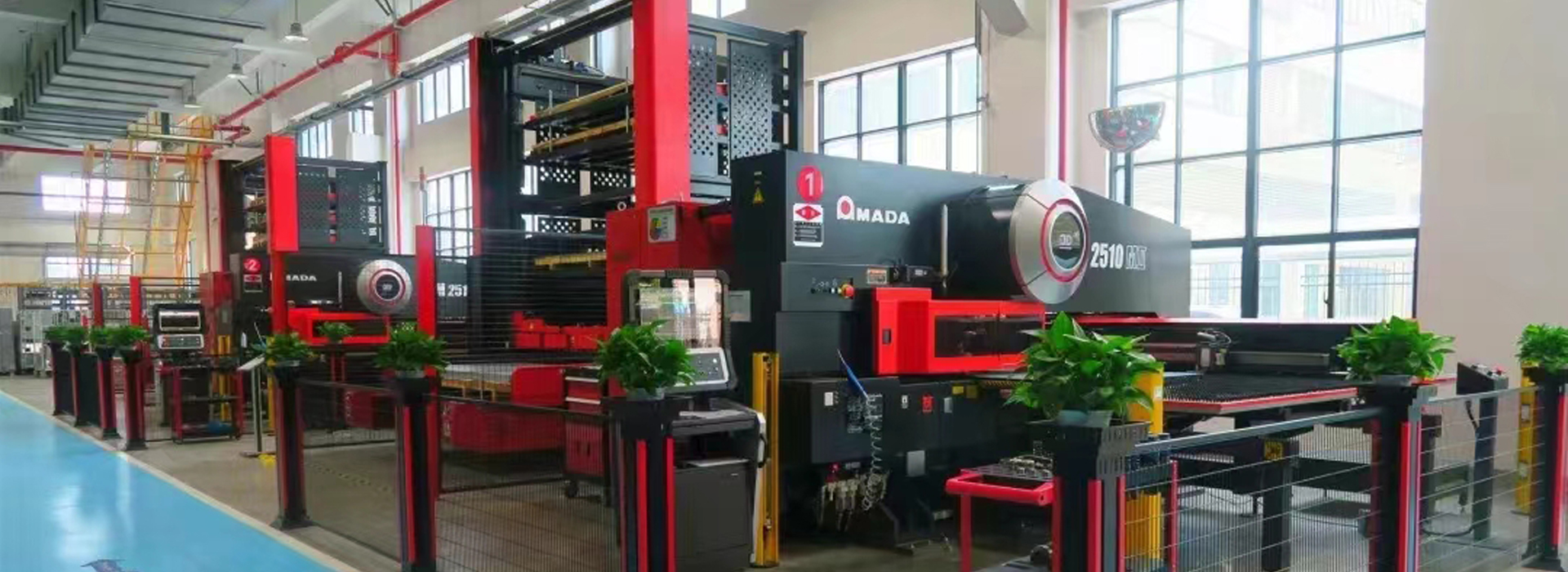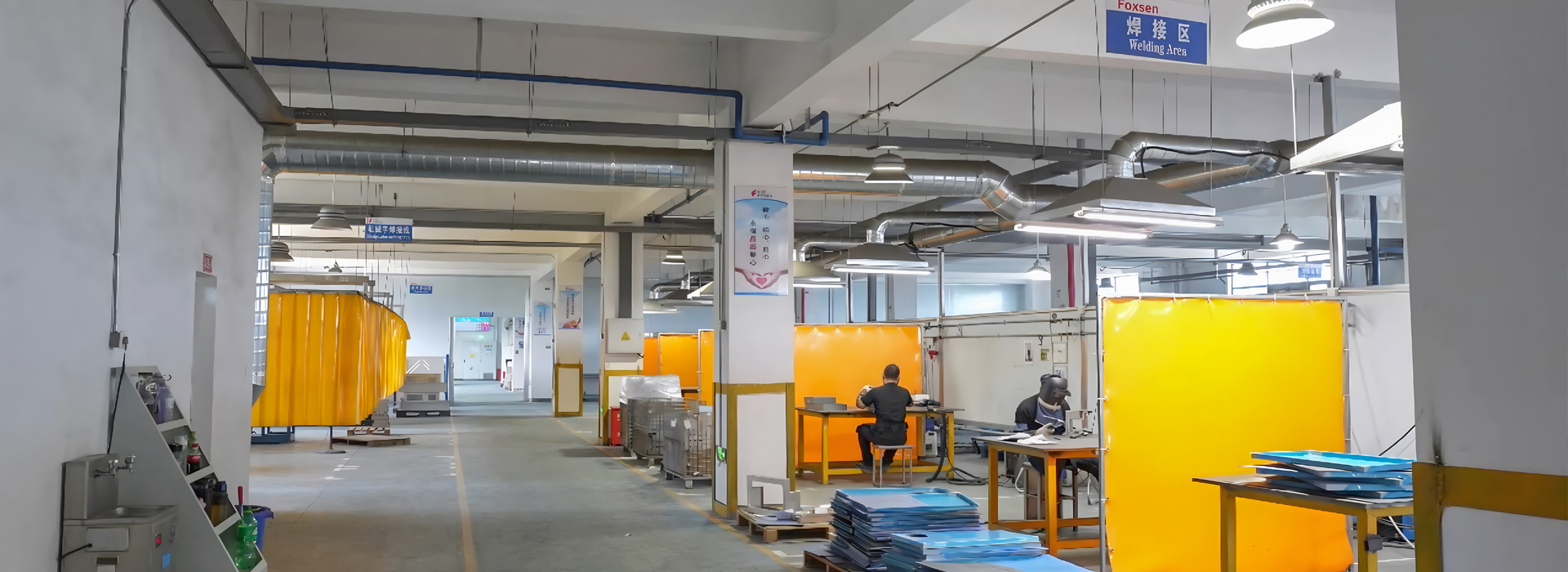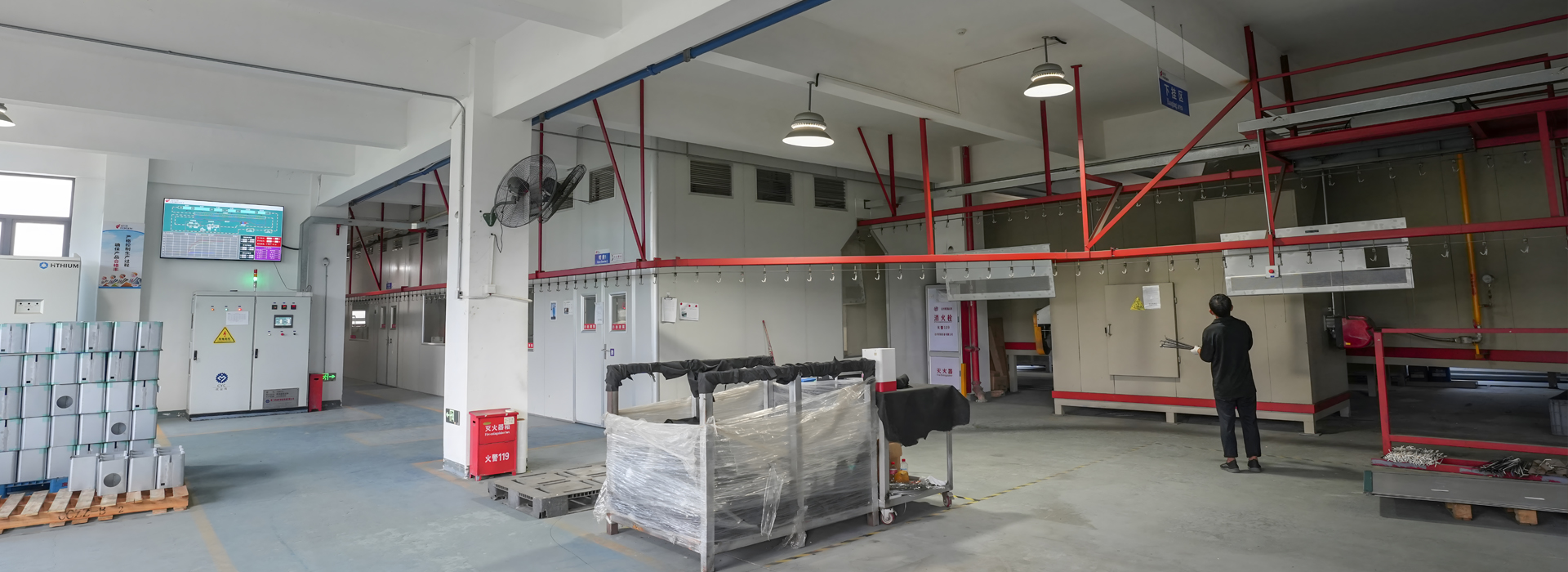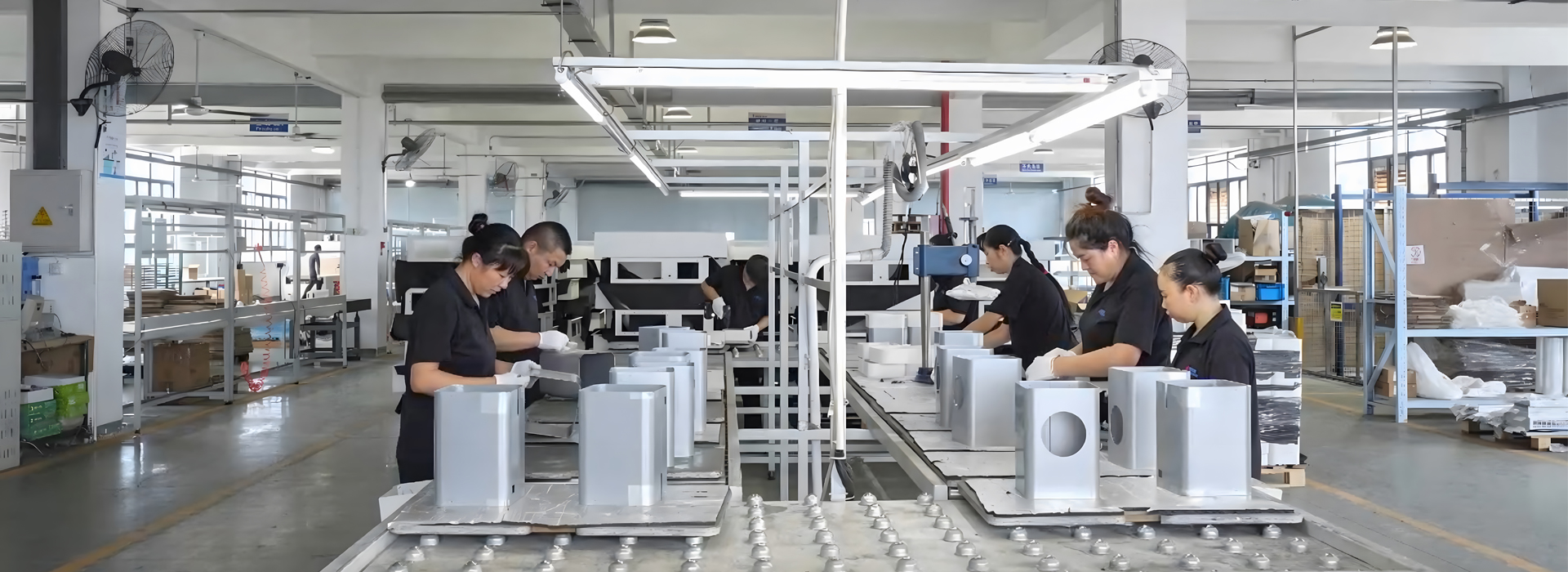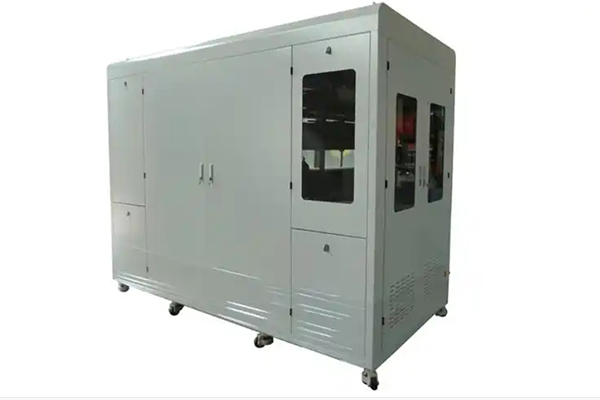
Choosing the best sheet metal rack enclosure is very important. It’s not just for holding your equipment; it must be strong, useful, and work well. A good enclosure can stop problems like overheating, hard-to-reach parts, or expensive fixes.
Here’s why it’s important:
Strong materials and the right thickness make it last longer.
A smart design helps you fix and clean parts easily.
Good heat control keeps your equipment safe from harm.
Picking the right one means you’re not just buying a rack—you’re keeping your equipment safe and avoiding problems.
Key Takeaways
Know what you need before buying a sheet metal rack. Understanding its use helps you pick the right one.
Pick the right material. Steel is strong, aluminum is light, and stainless steel doesn’t rust. Choose based on where you’ll use it.
Measure your space and tools carefully. Correct sizes stop fitting problems and allow good airflow.
Check for safety features like locks or tamper-proof designs. Keeping your tools safe helps avoid damage.
Think about airflow and cooling. Good ventilation stops overheating and protects your tools.
Know Why You Need a Sheet Metal Rack Enclosure
Think About How You’ll Use It
Before buying a sheet metal rack enclosure, ask yourself why you need it. Is it for keeping IT gear neat, protecting tools, or holding delicate electronics? Each job has its own needs, so knowing yours will help you pick the right one.
For instance, if it’s for a server room, look for good airflow and cable space. If it’s for a factory, focus on strength and weather resistance. Understanding your purpose will stop you from choosing the wrong rack.
Tip: List your needs before shopping. This saves time and money.
Decide What It Will Hold
After knowing the purpose, figure out what will go inside. Are you storing servers, routers, or switches? Maybe it’s big machines or fragile devices. The size and type of your items will decide the rack’s size, weight limit, and design.
Measure your equipment and leave room for future upgrades. Also, think about how you’ll access it. Do you need sliding shelves or panels that come off? These details will help you find the perfect sheet metal rack enclosure.
Pro Tip: Make a list of everything you’ll store. This helps you plan the layout and avoid missing anything.
Select the Best Materials for Sheet Metal Enclosures
Compare materials like steel, aluminum, and stainless steel
When picking materials for sheet metal enclosures, you’ll often see steel, aluminum, and stainless steel. Each has unique benefits, so knowing them helps you choose wisely.
Steel: Steel is very strong and handles heavy loads well. It’s great for tough jobs but is heavier than other options.
Aluminum: Aluminum is light and easy to move. It resists rust and works well for portable setups or places where weight matters.
Stainless Steel: This material is strong and fights rust. It costs more but is perfect for wet or chemical-heavy areas.
Tip: Pick a material based on your needs. Aluminum is good for lightweight setups, while stainless steel lasts longer in harsh conditions.
Evaluate durability, weight, and corrosion resistance
Durability, weight, and rust resistance are important when choosing materials for sheet metal enclosures. Here’s a simple breakdown:
Durability: Steel and stainless steel are tough and handle heavy use. Stainless steel works well in hard conditions, like humid or rough environments.
Weight: Aluminum is much lighter than steel. It’s easy to carry and install but still strong enough for many uses.
Corrosion Resistance: Stainless steel resists rust the best. Aluminum also does well, especially in salty or wet places.
Knowing these features helps you pick the right material. Whether you need strength, easy transport, or rust protection, there’s a material that fits your sheet metal rack enclosure needs.
Determine the Right Dimensions and Space Requirements
Measure the area and equipment size
Before choosing a sheet metal rack enclosure, measure the space. Use a tape to check the height, width, and depth. Look for obstacles like walls, doors, or nearby equipment. This helps the enclosure fit without trouble during setup.
Next, measure the equipment you’ll store. Check the size of each item, including cables or parts that stick out. If storing many items, add their sizes together. Leave extra room for airflow and future upgrades. Tight spaces can cause overheating or make repairs hard.
Tip: Write down all measurements and check them twice. It’s better to be sure than to make sizing mistakes.
Check if it works with your setup
After measuring, think about how the enclosure fits your setup. Will it fit through doors or narrow halls during delivery? Does it match your equipment layout? These details prevent big problems later.
Also, see how the enclosure works with your equipment. For servers, check for proper mounting holes and supports. For tools or other items, look for shelves or compartments you can adjust. Compatibility means everything fits and works well together.
Pro Tip: Choose modular sheet metal enclosures. They’re easier to change if your needs grow later.
By measuring carefully and checking compatibility, you’ll avoid mistakes and get the perfect sheet metal rack enclosure.
Evaluate Environmental Resistance
Think about protection from moisture, dust, and water
When picking a sheet metal rack enclosure, check how it handles moisture, dust, and water. These can harm your equipment if the enclosure isn’t strong enough. Look for enclosures with high IP (Ingress Protection) ratings. These ratings show how well the enclosure blocks dust and water. For example, an IP65-rated enclosure keeps out all dust and resists light water sprays.
The material matters too. Stainless steel and coated aluminum are great for stopping rust and moisture damage. Coated surfaces can also reduce the effects of damp air. This is especially helpful in wet or dusty places like factories or outdoors.
Tip: In very humid areas, pick enclosures with extra seals or gaskets to block moisture.
Check if it handles hot and cold temperatures
Extreme heat or cold can damage your equipment. That’s why you need an enclosure that works in both conditions. Many enclosures are tested in labs to see how they handle temperature changes. For example, thermal shock tests check how enclosures react to sudden heat or cold. Other tests, like temperature cycling, mimic real-world weather.
Here’s a simple table of common tests:
These tests make sure the enclosure protects your gear in tough conditions. If your setup faces extreme weather, choose enclosures with insulation or cooling systems.
Note: Good airflow and cooling features help control inside temperatures.
By focusing on environmental resistance, you’ll protect your equipment and save money on repairs. These tips will help you pick a sheet metal rack enclosure that lasts in tough environments.
Focus on Security Features for the Best Enclosure
Choose designs with locks and tamper-proof features
Security is very important for protecting your equipment. You don’t want people messing with it or causing problems. That’s why enclosures with locks and tamper-proof designs are a smart choice. Look for racks with strong locks, like keyed or combination systems. These make it harder for anyone to break in.
Some enclosures even have advanced systems like RFID or NFC locks. These let you control who can open the rack and keep track of access logs. If your equipment is sensitive, these high-tech options are very helpful.
Here’s a simple table of security features:
Tip: Pick locks that are easy to use but hard to break. Good locks should be both secure and convenient.
Protect valuable or sensitive equipment
If your equipment is expensive or important, security is a must. Think about what you’re storing in the enclosure. Is it IT gear, tools, or secret materials? Each needs different levels of safety.
For sensitive items, choose enclosures that meet special standards like TEMPEST. These block electromagnetic interference and stop data leaks. For valuable gear, tamper-proof panels and strong designs add extra protection.
Also, think about where the enclosure will be. If it’s in a busy area, pick models with hidden hinges or recessed locks. These features make it harder for people to mess with the rack.
Pro Tip: Combine security with environmental protection. A secure enclosure that also blocks dust, water, and heat gives you the best setup.
By focusing on these features, you’ll keep your equipment safe and worry less.
Ensure Proper Ventilation and Cooling
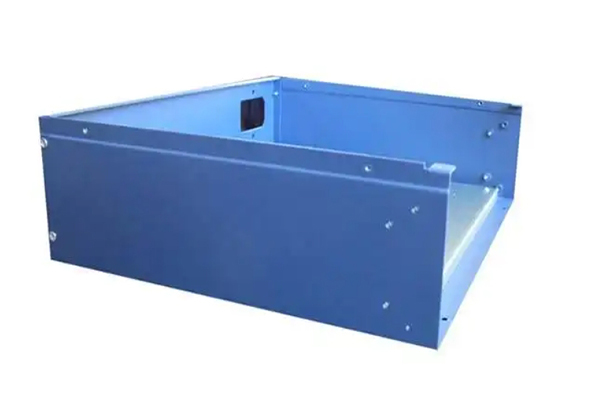
Look for vents to stop overheating
Good airflow keeps your equipment safe and working well. Without it, heat can build up and cause damage. Choose enclosures with vents or small holes that let air move easily. These features help hot air leave and cool air come in, keeping the temperature steady.
Rules like ASHRAE Standard 62.1-2010 and ASHRAE Standard 55-1992 explain why airflow is important. Many local codes also follow these rules to save energy and improve ventilation. Here’s a simple table about these standards:
When picking a rack, check for vents or airflow features. These can stop overheating and keep your equipment in good shape.
Use fans or air conditioning for extra cooling
Sometimes vents aren’t enough, especially in hot places or with sensitive gear. In these cases, fans or air conditioning can help. Fans push out hot air and pull in cool air. Air conditioners give direct cooling for very hot setups.
Studies show that bad airflow can cause hot spots in data centers. Using things like underfloor air systems or angled server exhausts can fix this. These methods spread cool air better and keep equipment safe.
If you have powerful servers or work in a hot area, think about adding fans or air conditioning. These tools can stop overheating and save you from expensive repairs.
Focus on Cable Management Features
Use racks with cable trays and grommets
Managing cables can be tricky, but some racks make it easier. Built-in cable trays and grommets help keep wires neat. They stop cables from tangling and getting messy. Imagine needing to fix something but finding a pile of tangled wires. It’s annoying, right? Good cable management avoids this problem.
Cable trays hold wires in place and keep them organized. Grommets protect cables when they pass through rack openings. This stops cables from wearing out too quickly. Together, these features make setup and maintenance faster and simpler.
Messy cables can cause big problems. Tangled wires make fixing issues harder and take more time. Worse, they can lead to system failures or shutdowns. Using racks with built-in cable management prevents these issues and keeps your equipment working well.
Tip: Pick a sheet metal rack enclosure with cable trays and grommets. Small details like these make a huge difference.
Make maintenance and organization simple
Keeping cables tidy isn’t just about looks. It also makes maintenance easier. You don’t want to waste time untangling wires or guessing which one is which. That’s why easy access is so helpful.
Choose racks with removable panels or swing-out frames. These features let you reach cables without taking everything apart. Labeling cables also helps. When wires are marked, you can quickly find and fix problems.
Here’s why this matters: messy cables slow you down and cause mistakes. Good cable management saves time and avoids extra work. It’s an easy way to keep your setup neat and running smoothly.
Pro Tip: Plan your cable layout before starting. A little planning keeps your space organized and stress-free.
Check Load Capacity and Structural Strength
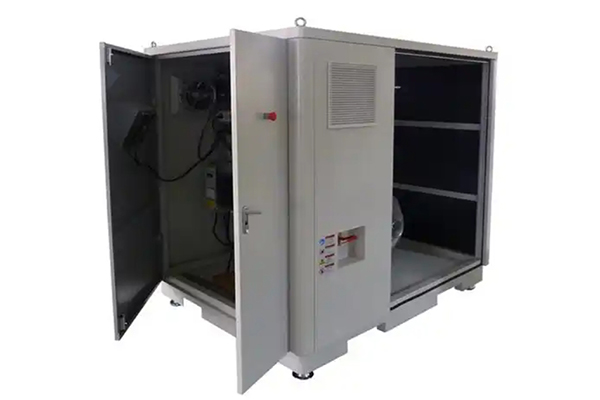
Know how much weight the rack can hold
Before buying a sheet metal rack enclosure, check its weight limit. If you overload it, the rack might break and damage your equipment. Look at the manufacturer’s guide for the maximum weight it can handle. This is usually listed in pounds or kilograms. Make sure the total weight of your items is less than this limit.
If you’re unsure, pick racks that have been tested for strength. Proof load testing shows how much weight the rack can safely hold. These tests often mimic real-life conditions to see how the rack performs under pressure. Some tests even reduce failure rates by up to 25%. This means the rack is built to handle heavy loads without breaking.
Here’s a simple table about testing and load capacity:
By learning about these tests, you can pick a rack that stays strong under pressure.
Tip: Choose a rack with a higher weight limit than you need. This gives you extra safety.
Use stronger designs for heavy equipment
For heavy equipment or tough jobs, pick reinforced racks. These racks are made with thicker metal, extra supports, or welded parts. These features make them stronger and better for hard environments.
Reinforced racks are great for factories, warehouses, or outdoor use. They can handle bumps, vibrations, and other stresses that regular racks can’t. They also protect expensive or delicate equipment better.
Look for racks labeled "heavy-duty" or "industrial-grade." These often have stronger corners or double-layered panels. These features not only make the rack tougher but also help it last longer.
Pro Tip: Ask the manufacturer for test data if you’re unsure. This data shows how the rack performs in extreme conditions.
By focusing on weight limits and strong designs, you’ll get a rack that works well, even for tough setups.
Explore Customization and Design Options
Choose modular designs for easy upgrades
Picking a modular sheet metal rack enclosure is very smart. It lets you change your setup as your needs grow. Adding new gear or moving things around becomes simple. You won’t need to buy a whole new rack—just adjust the parts you have.
Modular racks are also easier to set up. Unlike fixed designs, they don’t need tricky changes. They’re strong enough for tough jobs but still flexible. While they may cost more at first, they save money later. You can reuse and adjust them for different tasks.
Tip: Plan for future changes. Modular racks are a great choice for growing setups.
Use adjustable shelves and focus on looks
Adjustable shelves are super helpful. They let you arrange your gear just right. Got a bigger server or new tools? Move the shelves to fit them. This makes upgrades and repairs much easier. Plus, it helps you use all the space inside the rack.
Don’t ignore how your rack looks. A nice-looking enclosure doesn’t just protect—it also improves your workspace. A clean, modern design shows you care about your setup. It keeps everything neat and professional.
Pro Tip: Pick racks that are both useful and stylish. Adjustable shelves and good looks make your enclosure better.
By choosing modular designs and adjustable features, you’ll have a setup that’s flexible and neat. These ideas will help you get the best value from your sheet metal rack enclosure.
Balance Costs and Warranty for the Best Value
Compare quality and budget limits
Picking a sheet metal rack enclosure means balancing cost and quality. Spending too little might cause problems later, but overspending isn’t smart either. Think about the upfront cost versus long-term savings. For instance, a simple aluminum rack costs less now but may need more repairs later. A stronger custom rack might cost more but save money over time.
Here’s a simple table to compare options:
Think about what you need. If your space is safe and controlled, a simple rack might work fine. But if you need more protection or durability, spending more on a premium option could be smarter. Always match the rack to your needs and future plans.
Tip: Don’t just look at the price. Think about all costs, like maintenance and running expenses.
Look for warranties and customer support
A solid warranty can save you money later. Check what’s included before buying. Does it cover repairs, replacements, or both? Some brands, like Foxsen, offer full warranties that cover many problems. This protects your investment and gives peace of mind.
Good customer support is also important. Imagine needing help but not getting a response—that’s frustrating! Pick brands with reliable support through phone, email, or chat. Quick answers make fixing or upgrading easier.
Pro Tip: Choose a brand known for great customer service. A helpful support team saves time and reduces stress.
By balancing costs, warranties, and support, you’ll get the most value from your sheet metal rack enclosure. It’s not just about saving money—it’s about making a smart choice for the future.
Picking the right sheet metal rack enclosure isn’t hard. Use these 10 tips to choose one that fits your needs. Think about why you need it, the materials, and the size. Also, check for environmental protection, security, and good airflow. Don’t forget to look for neat cable management and strong designs. Customizable options can also be very helpful.
The best enclosures are strong, useful, and long-lasting. Take your time to plan and check your setup. Pick a rack that works well for you. A little effort now can save you big problems later!
FAQ
What is the best material for a sheet metal rack enclosure?
The best material depends on what you need. Aluminum is light and easy to move. Stainless steel doesn’t rust and lasts in tough places. Steel is very strong and holds heavy items well.
Tip: Pick stainless steel for damp or wet areas to stop rust.
How do I know the right size for my enclosure?
Measure your equipment and the space where it will go. Leave extra room for air to flow and future changes. Check your measurements twice to avoid mistakes.
Pro Tip: Use modular designs if you think your setup will grow.
Can I customize my sheet metal rack enclosure?
Yes, many racks can be customized. You can add shelves that move, cable organizers, or modular parts. Custom options let you make the rack fit your needs.
Note: Ask the maker about customization choices before you buy.
How do I ensure proper ventilation for my equipment?
Choose racks with vents or small holes for airflow. For hot setups, think about adding fans or cooling systems. Good airflow stops overheating and protects your gear.
Tip: Follow ASHRAE rules for the best cooling and airflow.
Are warranties important when buying a rack enclosure?
Yes! A warranty keeps your investment safe. It covers fixes or replacements if something breaks. Good customer service also helps when you need support.

